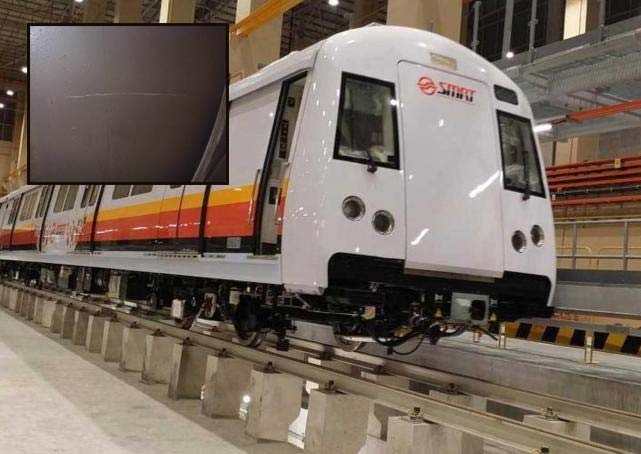5 out of 26 China-made MRT car-body replacements completed, rest to be finished by 2019

Car-body replacements for five of the 26 China-made MRT trains have been completed. The rest of the trains in the rectification programme will be completed by 2019, according to a Land Transport Authority (LTA) statement today (July 6).
LTA had awarded Contract 151A in 2009 to Kawasaki Heavy Industries (KHI) and China Southern Railway Qingdao Sifang Locomotive and Rolling Stock Company (CSR Sifang) to design, manufacture, and deliver 35 new trains for the North-South East-West Lines (NSEWL).
The trains were progressively put into service from February 2011, following rigorous testing of their safety and reliability.
Yesterday, train operator SMRT said in a Facebook post that its engineers discovered 26 of the 35 C151A trains delivered had cracks in the structure connecting the car body and the bogie.
LTA had responded to media queries clarifying that the defects found on the train body are not safety-critical and do not affect the train's systems or performance.
Prior to the commencement of passenger service, all new trains arriving in Singapore would be put through testing and commissioning. The same was done for the KHI-CSR Sifang trains.
During such testing, there was an incident on one train where the cover of the train battery housing flew open due to a build-up of gases.
The manufacturer took immediate action to replace its supplier and improved the design of the battery housing for all affected trains.
Incidents of cracks of the draughtscreen on five trains were also discovered. These were found to be caused by errors during the installation process and unrelated to the hairline cracks found on the 26 trains' car-bodies.
"It is not unusual to detect some defects on new trains. We then take appropriate action to have them rectified by the manufacturer," said LTA.
In July 2013, during a routine inspection of the trains, hairline cracks on the surface of the car-body bolster were found. 22 of the 26 trains were in passenger service then.

LTA immediately carried out further inspections. No cracks were found on other components of the trains.
Laboratory tests showed that these hairline cracks were due to localised impurity in the aluminium car-body material that occurred during the manufacturing process.
LTA engineers and its contractor assessed that the hairline cracks would not affect the operational safety of the trains.
To confirm this, LTA said it further sought the opinion of an independent third-party assessor, TUV Rheinland, which concurred that the trains were safe to operate.
"Due to the nature of the defect, the most effective way of addressing it is to replace the entire car-body shell. As the trains were under warranty, we required the contractor to replace the entire car body shell.
"Hence, since July 2014, the affected trains have been progressively sent back to the factory for rectification works. The costs of the shipping are borne by the contractor," said LTA.
LTA said it has been working closely with SMRT to ensure that this unexpected occurrence did not affect train deployment.

"The replacement of a train car body is time consuming and labour-intensive, with each car body replacement taking up to four months. Hence, to minimise the impact on our train operations in Singapore as well as the lack of facilities and space for repair works of this nature at our depots, only one train is sent back to the factory in China at any one time.
"We did not send all of the trains back at once as they were still fit and safe for service and we wanted to ensure sufficient train-availability for commuters," added LTA.
Mr Patrick Nathan, vice president, SMRT Corporate Information and Communications said: "Passenger safety is paramount to SMRT, and under no circumstance will this be compromised. Any train that is assessed to be defective or unfit for passenger service is not put into service.
"The C151A trains which were discovered to have hairline cracks are the newest in our fleet serving the North-South East-West Lines. We have been closely monitoring the situation with LTA and the manufacturer, and the defects have been deemed to be not safety-critical.
"The decision to send the trains back to the manufacturer for rectification will not affect train service availability or frequency, as these are being done in small batches."
Starting next year, with the arrival of more new trains for NSEWL and when trains currently undergoing resignalling are ready, LTA will be able to send two trains concurrently for replacement works.
This will speed up the rectification programme and its completion can be brought forward to 2019.
As of today, LTA said the car-body replacement for five of the 26 trains has been completed. The car-body of the sixth train is being replaced.
LTA said, together with the contractor, it will continue to carry out rigorous inspections to ensure that all trains are safe for service.
spanaech@sph.com.sg